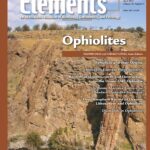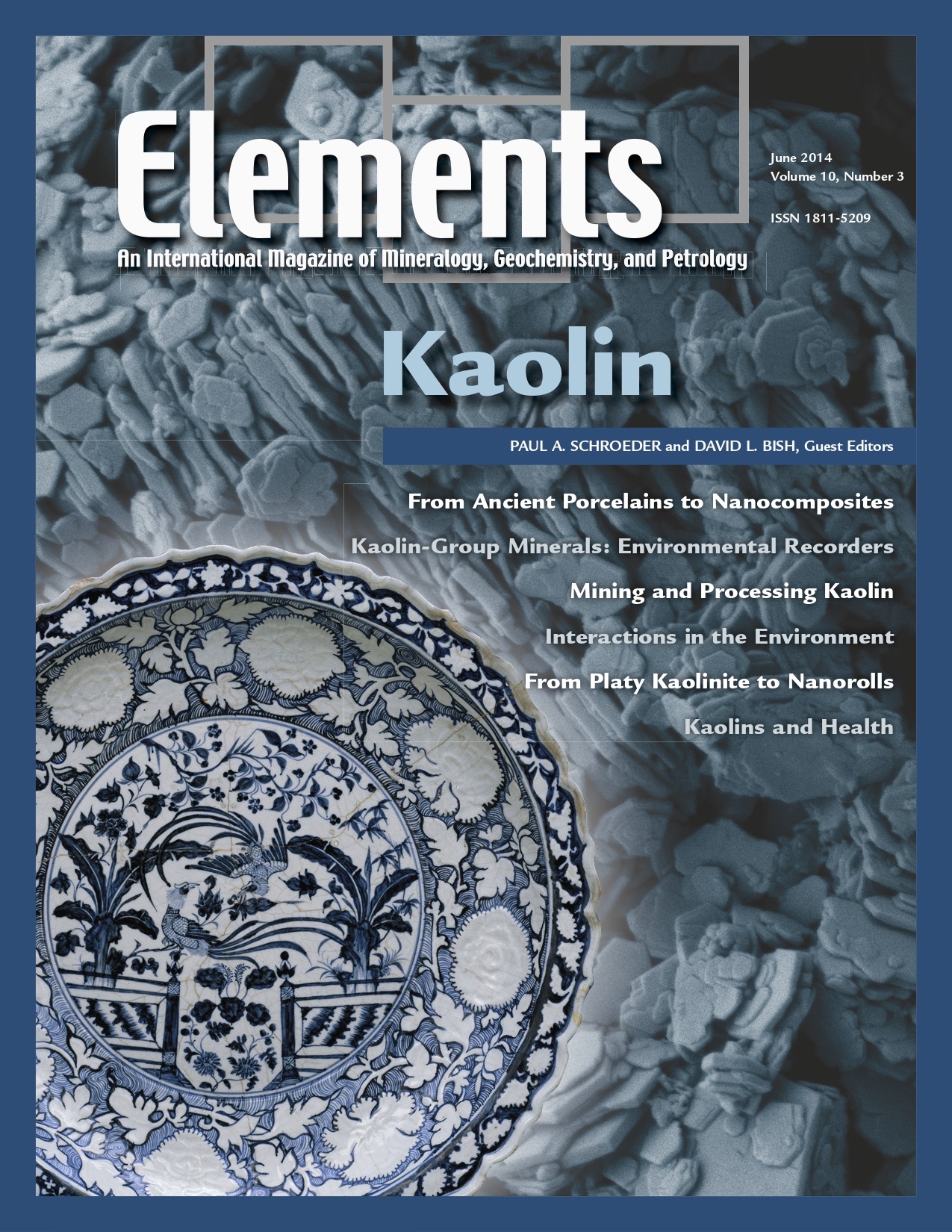
Ophiolites, April 2014, Vol. 10, No. 2
June 28, 2024
Arc Magmatic Tempos, April 2015, Vol. 11, No. 2
June 28, 2024Kaolin, June 2014, Vol. 10, No. 3
$20.00
Although bearing the simple name “kaolin,” this natural material has a variety of geologic origins and many industrial applications significant to society. Known as china clay, kaolin has a long history dating back to Kauling, China, and its first exploitation in the field of ceramics.
Kaolin
June 2014, Vol. 10, No. 3
Although bearing the simple name “kaolin,” this natural material has a variety of geologic origins and many industrial applications significant to society. Known as china clay, kaolin has a long history dating back to Kauling, China, and its first exploitation in the field of ceramics. Kaolin is one of nature’s most abundant nanomaterials. Its fine, clay-sized particles, unique shapes, and layered structures make it central to Earth’s near-surface critical zone. Concerns for energy efficiency and environmental awareness in the industry have led to advances in mining and reclamation practices. The crystallographic and elemental varieties of kaolin require them to be carefully characterized as they lend themselves for use in plastics, papers, pigments, and ceramics. Kaolin minerals are being probed with computational chemistry and new spectroscopic tools to expand their applications and to understand their significance in biology. We are now exploring how kaolin can be nanocomposited to create materials with novel properties.
Why You’ll Love Elements Magazine:
- Expert Contributors: Articles written by renowned researchers in the field of geoscience.
- Engaging Content: Join a community of readers who are passionate about Elements.
- Exceptional Quality: Each issue is printed on high-quality paper with stunning visuals and detailed illustrations that bring complex scientific concepts to life.
Order your copy of the June 2014 issue of Elements magazine today and explore the properties of kaolin.
Related products
-
Deep Earth And Mineral Physics, June 2008, Vol. 4, No. 3
$20.00The field of high-pressure mineral physics is central to our understanding of the Earth’s interior and its evolution. It is also a field that is rapidly advancing.
-
Supervolcanoes, February 2008, Vol. 4, No. 1
$20.00Explosive super-eruptions from large volume, shallow magma systems lead to enormous and devastating pyroclastic flows, the formation of gigantic collapse calderas, and deposition of volcanic ash over continent-sized areas. Recognition that future eruptions from these “supervolcanoes” will undoubtedly have severe impacts on society—and perhaps on life itself—has led to recent public and media interest.
-
The Nuclear Fuel Cycle – Environmental Aspects, December 2006, Vol. 2, No. 6
$20.00Increasing concerns for the effects of global warming that result from rising greenhouse gas concentrations in the atmosphere have led to a reexamination, even enthusiasm, for nuclear power. Of all the current alternatives to fossil fuels, nuclear fission is the most important source of energy, accounting for 17 percent of the world’s electricity.




